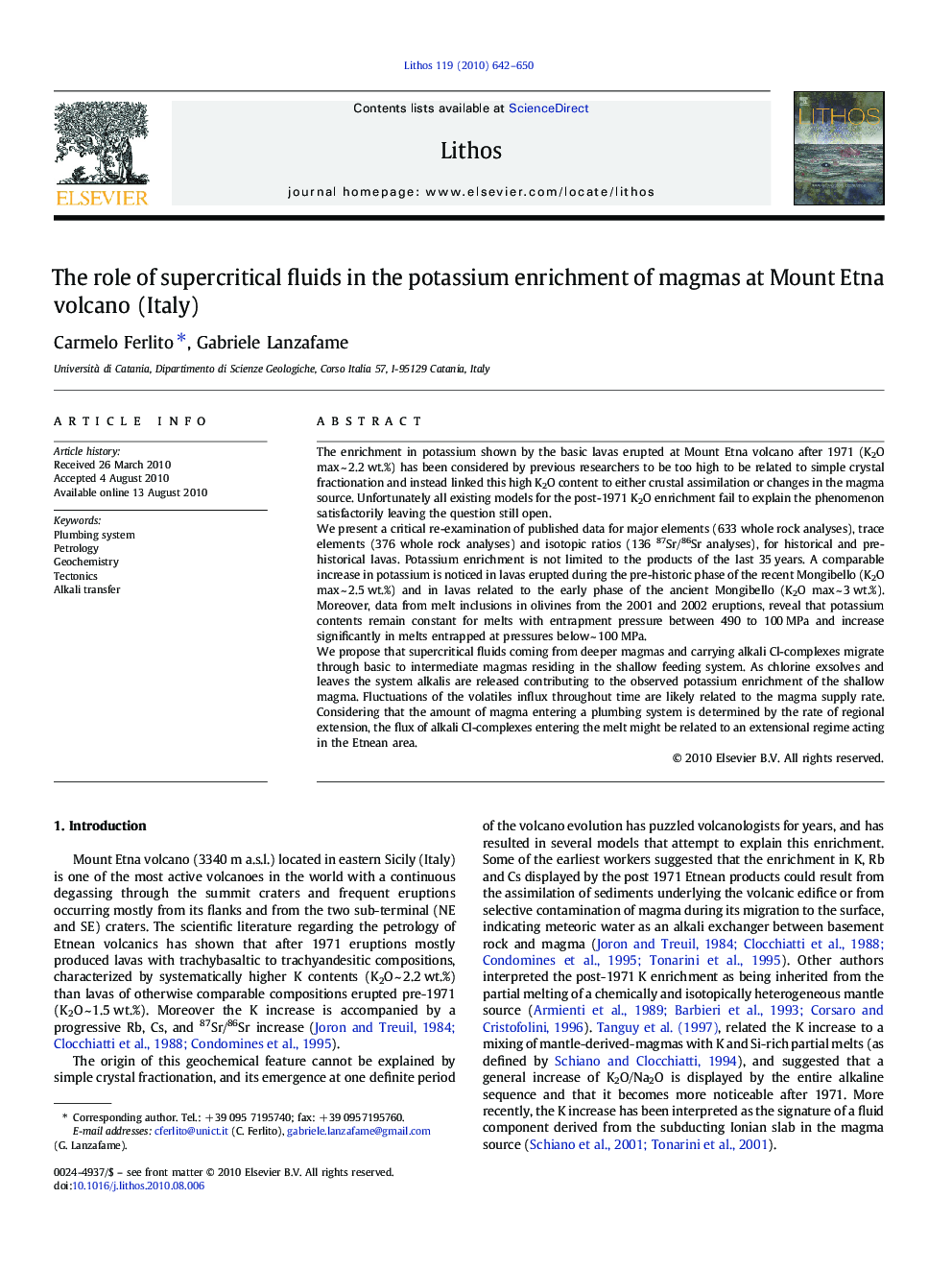| Article ID | Journal | Published Year | Pages | File Type |
|---|---|---|---|---|
| 4716897 | Lithos | 2010 | 9 Pages |
The enrichment in potassium shown by the basic lavas erupted at Mount Etna volcano after 1971 (K2O max ~ 2.2 wt.%) has been considered by previous researchers to be too high to be related to simple crystal fractionation and instead linked this high K2O content to either crustal assimilation or changes in the magma source. Unfortunately all existing models for the post-1971 K2O enrichment fail to explain the phenomenon satisfactorily leaving the question still open.We present a critical re-examination of published data for major elements (633 whole rock analyses), trace elements (376 whole rock analyses) and isotopic ratios (136 87Sr/86Sr analyses), for historical and pre-historical lavas. Potassium enrichment is not limited to the products of the last 35 years. A comparable increase in potassium is noticed in lavas erupted during the pre-historic phase of the recent Mongibello (K2O max ~ 2.5 wt.%) and in lavas related to the early phase of the ancient Mongibello (K2O max ~ 3 wt.%). Moreover, data from melt inclusions in olivines from the 2001 and 2002 eruptions, reveal that potassium contents remain constant for melts with entrapment pressure between 490 to 100 MPa and increase significantly in melts entrapped at pressures below ~ 100 MPa.We propose that supercritical fluids coming from deeper magmas and carrying alkali Cl-complexes migrate through basic to intermediate magmas residing in the shallow feeding system. As chlorine exsolves and leaves the system alkalis are released contributing to the observed potassium enrichment of the shallow magma. Fluctuations of the volatiles influx throughout time are likely related to the magma supply rate. Considering that the amount of magma entering a plumbing system is determined by the rate of regional extension, the flux of alkali Cl-complexes entering the melt might be related to an extensional regime acting in the Etnean area.
Research Highlights►K increment unrelated to Crystal fractionation found in Etnean lavas of last 60 ka. ►The volatile-induced differentiation provides a good explanation of K increment. ►K-enriched lavas indicate high magma influx associated to extensional tectonics.
